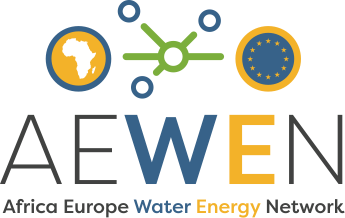Target countries
AEWEN focuses on three African countries : Morocco, Tunisia and Senegal
Morocco
Water
WATER SCARCITY – from 500 to 1000m3/inhabitant/year (2013-2017), Renewable water resources per capita)
- With strong regional disparities, water transfers are a necessity
- Providing drinking water to coastal cities became a challenge
- Increasing exports of fruit and vegetables, produced in the most water-scarce areas
- The most important adjustments come from improvements in irrigation systems and increased reservoir capacity: Construction of dams, desalination plants (2.500 M€), modernization of irrigation system, improvement of water supply in rural areas
- Morocco has launched a Priority Programme for Drinking Water Supply which will allocate more than 10 billion euros between 2020 and 2027
Energy
- Morocco is one of the most advanced African countries in terms of energy transition and is aiming for 64,3% renewable energy by 2030 (vs 34% in 2020)
- There is still a huge potential for solar and wind energy as well as for hydroelectricity
- Great importance is given to the promotion of investments in the field of energy, especially in renewable energy, and to the support of R&D to develop innovative technologies. There is also an objective of reducing the energy consumption
- 75 % of the planned investments concern renewable energy (396 M €)
Tunisia
Water
ABSOLUTE SCARCITY – less than 500 m3/inhabitant/year (2013-2017, Renewable water resources per capita)
- Water resources in Tunisia are characterised by scarcity and a pronounced irregularity
- Tunisia has put in place systems and legislation to assure access to drinking water for the majority of the urban and rural population and to provide supplies for agricultural irrigation, as well as the industrial and tourism sectors
- Irrigation constitutes the largest consumer of water in Tunisia, using 80% of the total water potential in the country
- Effective management of water resources depends on continual monitoring and control as well as the implementation of reforms in the water sector
- There is a great need for investment in the water sector: in 2020 the Tunisian authorities signed contracts of 38 M EUR with European Investment Bank, and more investment in the water sector is expected in the coming years
Energy
- Tunisia is facing a growing energy balance deficit due to declining hydrocarbon production and increasing energy demand in all sectors of activity. The country is largely dependent on the importation of fossil fuel sources (oil and natural gas)
- A strategy to enhance the energy transition has been developed. It focuses on:
- diversifying the energy mix and integrating renewable energy
- strengthening energy efficiency
- rationalising energy subsidy
- strengthening the grid and the interconnections
- Tunisia is aiming for 30% renewable energy by 2030 (vs 3% in 2019)
Senegal
Senegal adopted in 2012 a new strategy towards economic and social emergence, known as Plan for an Emerging Senegal (PES). Water and energy are two of the key sectors targeted in this development model.
Water
WATER STRESS – from 1000 to 1700 m3/inhabitant/year (2013-2017, Renewable water resources per capita))
- Water resources are both above and below ground.
- Senegal is experiencing strong growth in urban areas
- Good water and waste management is a priority.
- Plan Senegal Emergent aims to give access to water and sanitation by
- Promote access to drinking water in urban and rural areas
- Developing sanitation in cities
- Supplying equipment and facilities
Energy
- Senegal wants to shift away from fossil fuel towards renewable energy, aiming for 30% renewable energy by 2025 (vs 22% in 2020)
- Universal access to affordable electricity remains a challenge, especially in rural areas where only 54 % of the population has access to electricity (data from 2019)
- Facing the growing demand for energy, the national DSO/TSO Senelec has planned to install new production infrastructures as well as to improve and extend its distribution and transport networks



